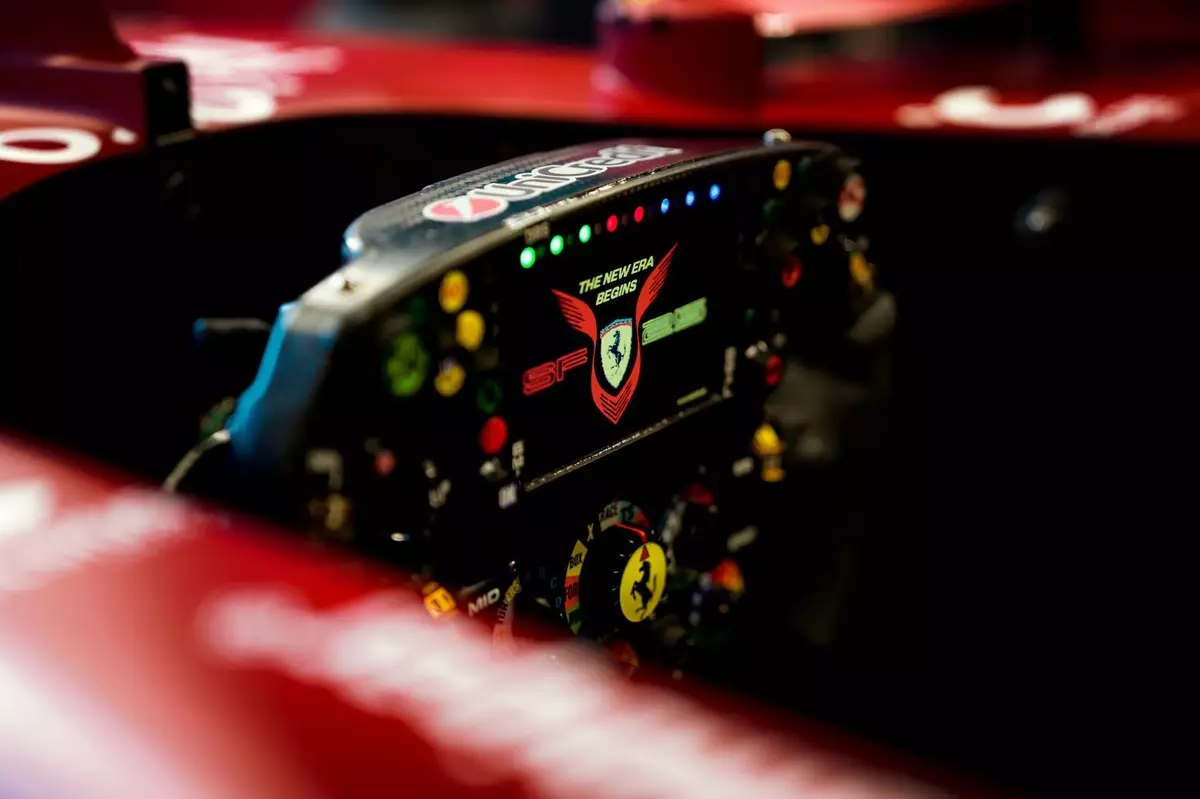Lewis Hamilton’s transition to Ferrari marks a significant chapter in his storied Formula 1 career. Although the initial outings in Australia and China didn’t yield perfect results, Hamilton’s first pole position and victory in the Shanghai sprint race were tangible affirmations of his potential with the Italian team. These early signs, while positive, reveal the underlying complexities of adapting to a new vehicle after over a decade with the dominant Mercedes team. As Hamilton embarks on this new journey, it’s clear that both Ferrari and Hamilton himself must navigate the nuances between the two teams’ philosophies to optimize performance on the track.
A Shift in Driving Philosophy
The 2025 race car embodies a design ethos that diverges from what Hamilton has become accustomed to over 12 formidable years with Mercedes. This shift has required Hamilton to recalibrate not just his driving style, but also the intricacies of how he communicates with the car. Muscle memory, built over years, poses both an advantage and a challenge in this context. The race margins in F1 have never been tighter, making every detail a crucial factor. It’s in this landscape that Ferrari has taken steps to adapt the SF-25 to Hamilton’s preferences, evident in their efforts to redesign the steering wheel layout to match Hamilton’s needs.
Personalized Customization: More Than Just Looks
Customization in Formula 1 isn’t merely about how things appear; it’s fundamentally about performance and comfort. Ferrari’s approach exemplifies this principle, particularly with the enhancements made to Hamilton’s steering wheel. Beyond the visually striking welcome message displayed on the wheel’s launch screen, Ferrari’s modifications delve into the realm of ergonomic efficiency—creating a clutch and gear lever setup tailored to Hamilton’s driving style. Such specialized adaptations are crucial for a driver like Hamilton, who thrives on precision and feels every nuance of his car’s feedback.
Data Management: Bridging Two Worlds
A striking aspect of Hamilton’s transition involves the management of data. The Ferrari SF-25 has introduced a level of complexity that contrasts sharply with the straightforward strategy used at Mercedes. Hamilton’s steering wheel now showcases elaborate metrics, such as the state of charge (SOC) of the battery pack and the engine mapping (ENG). This granular control offers significant insights during races, allowing Hamilton to optimize his performance actively. The contrast to teammate Charles Leclerc’s more simplified data presentation further highlights how critical personalized adaptations are for Hamilton to rebuild his rhythm in this new environment.
Enhancing Situational Awareness
Much of Hamilton’s strength in F1 has stemmed from his acute situational awareness on the track. The changes to his steering wheel display are designed not only for familiarity but for real-time strategic benefits. Hamilton’s requests for specific configurations—like having both the engine and hybrid modes readily available—reflect his desire to harness every advantage. Such knowledge allows him to remain engaged and focused, aligning with his historical performance at Mercedes, where every bit of data was accessible at his fingertips. This prioritization of detailed information equips him to respond swiftly to changing race conditions, thereby maximizing his competitive edge.
Adapting Team Functions for Performance Gains
The diversity in how Mercedes and Ferrari display and manage controls illustrates the stark differences in team operations. Where Mercedes favored a minimalist approach with integrated functions controlled through a single ‘STRAT’ knob, Ferrari has opted for a more segmented layout, facilitating dynamic adjustments during a race. The introduction of quick selectors and dedicated screens for different modes exemplifies Ferrari’s commitment to creating a tailored environment for Hamilton. Those configurations not only aim to expedite his adaptation but also signify Ferrari’s keen understanding of the importance of personalized settings to cultivate Hamilton’s capabilities.
Pursuing Competitive Advantages
In the hyper-competitive arena of Formula 1, any edge gained through timely adaptations can mean the difference between victory and mediocrity. Hamilton’s transition—to align the unique characteristics of the SF-25 with his own preferences—doesn’t guarantee immediate success. However, Ferrari’s focus on integrating Hamilton’s likes and gameplay approaches underscores a strategic effort that could foster quicker acclimatization. As both Hamilton and Ferrari work towards melding their approaches, it opens the door for potential success in the seasons to come, shaping the narrative of a team revitalized by one of F1’s greats.
Through tailored configurations and enhanced data management, Hamilton’s effective adaptation might just cement his legacy during this new phase. The nuances of personalization reflect not just a driver’s needs but a larger strategy from Ferrari to harness the power of expertise and experience to drive towards future success.

